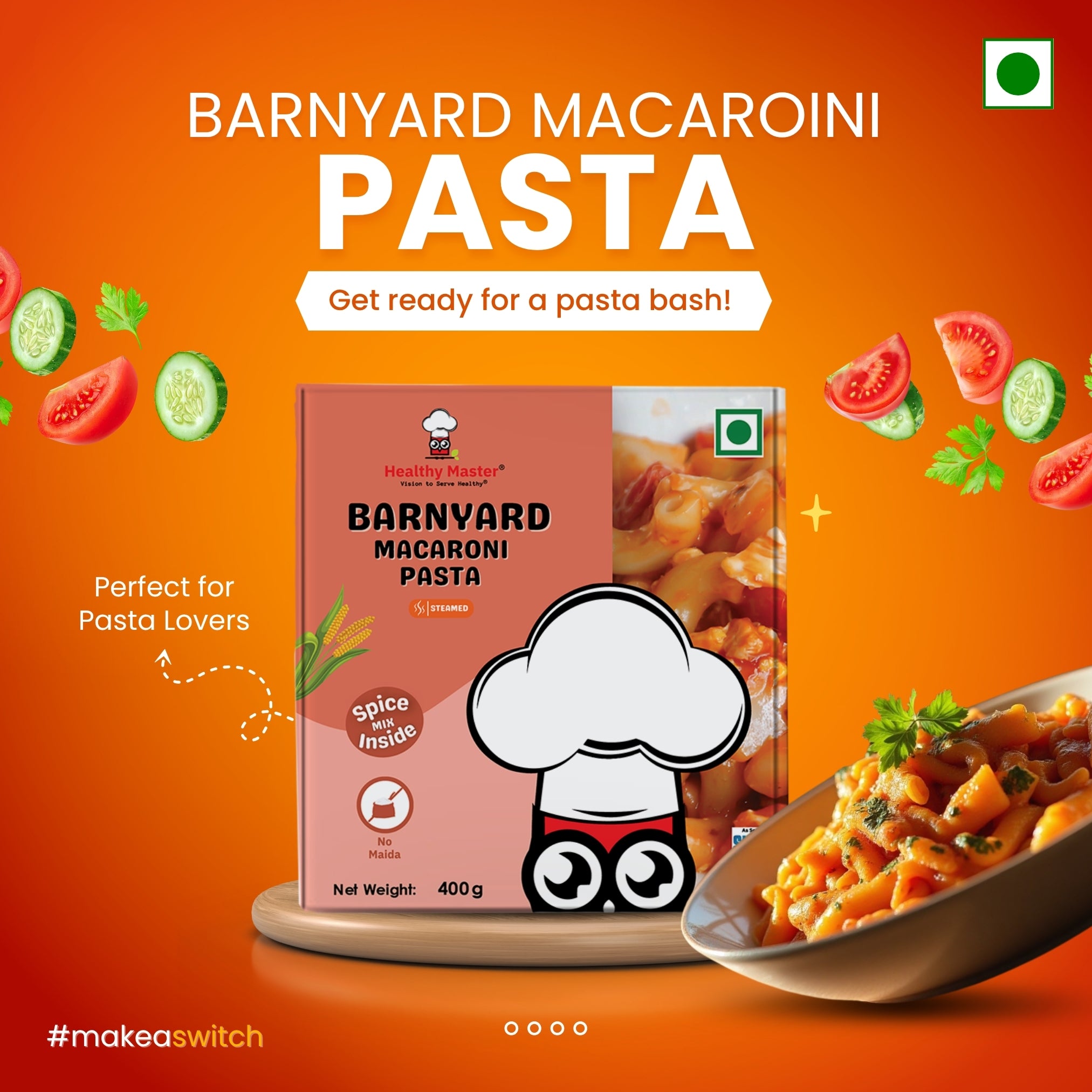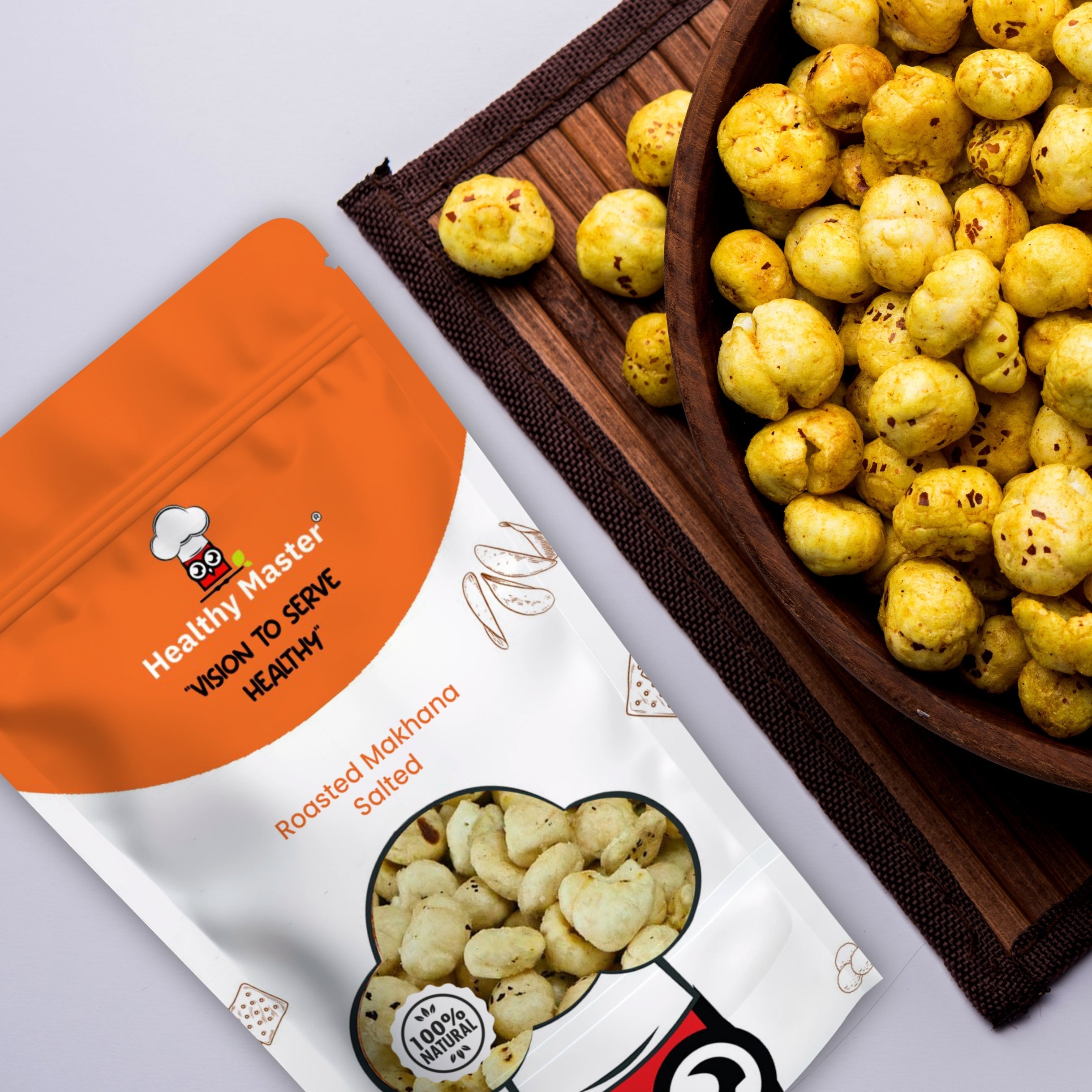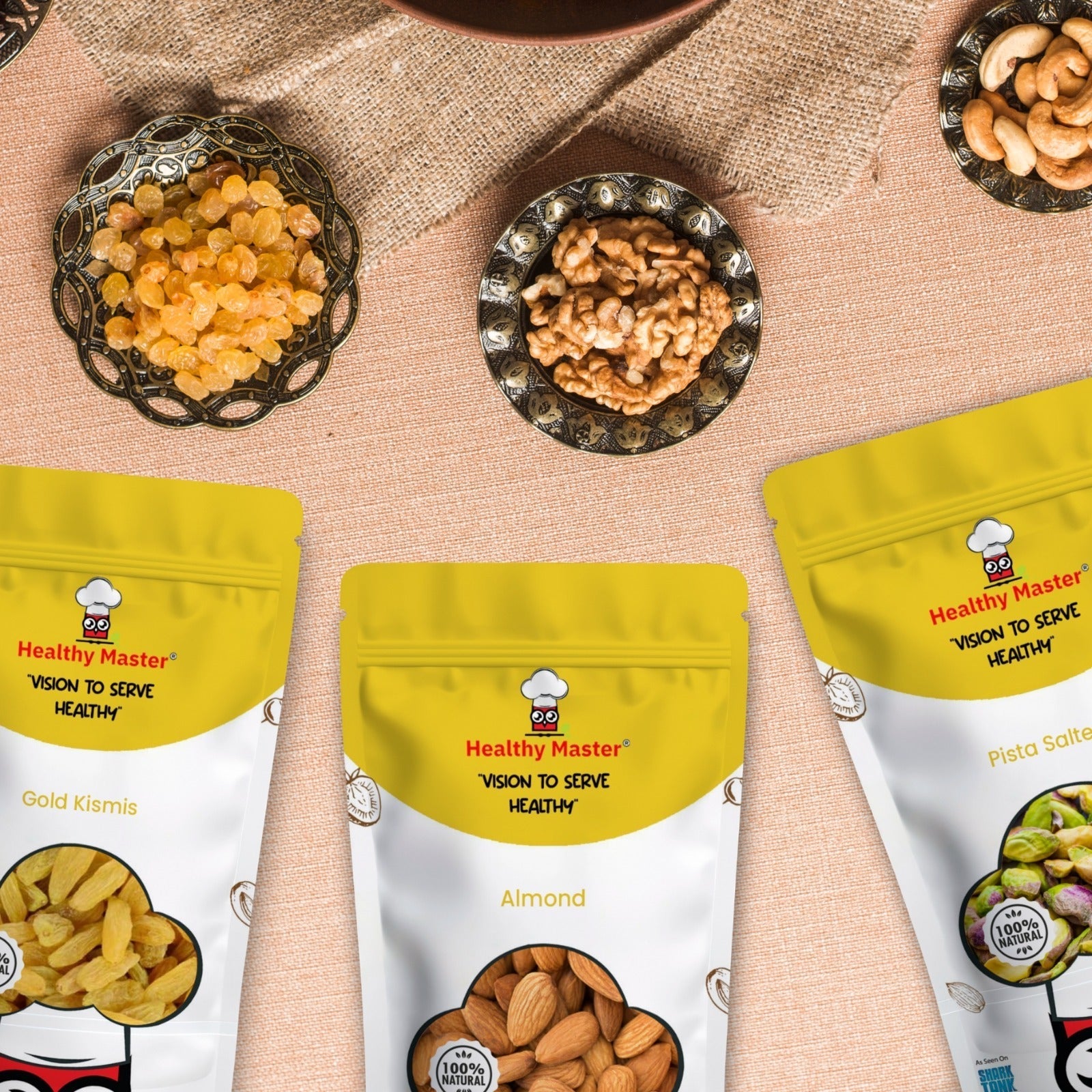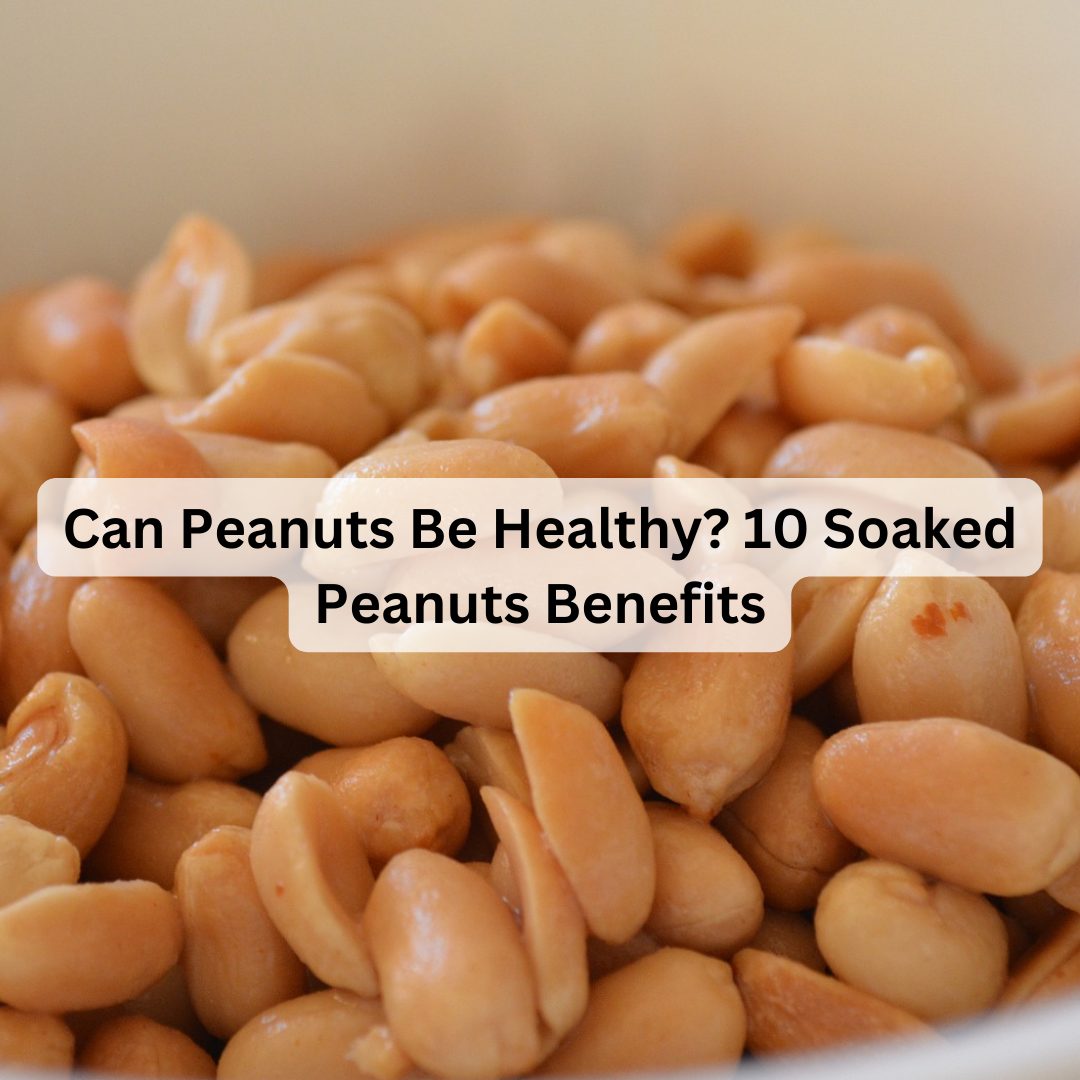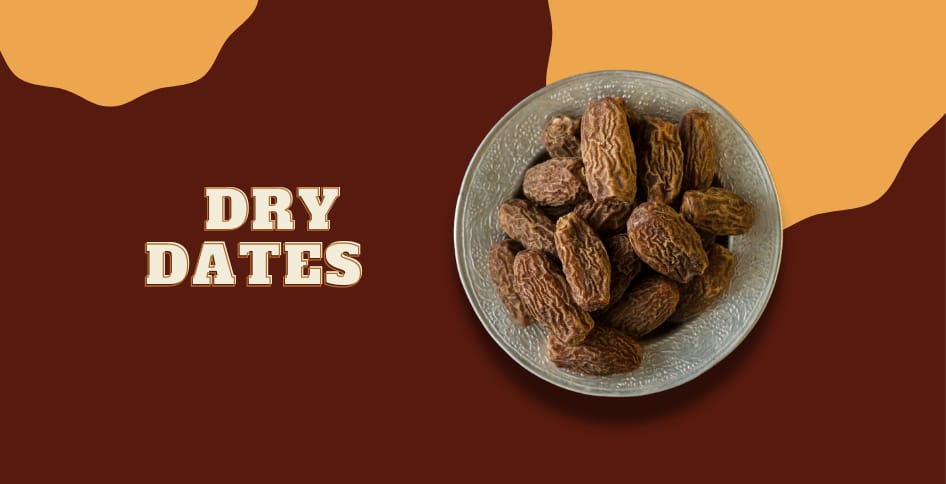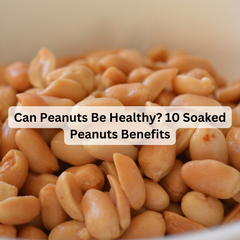Dry fruits are a good source of various nutrients and contain a lot of medicinal properties. They are known as delicacies, but because of their health benefits, they have become a must-buy. Even children who usually avoid fresh fruits adore them. Adding different types of dry fruits to yogurt, smoothies, oatmeal, and other wholesome breakfasts can make them even more tempting for kids. They are also very convenient to carry; you can munch on them anywhere to boost your energy and curb your hunger. The good thing is that they do not contain refined sugar, cholesterol, or sodium. If you’re watching your intake, keeping track of dry fruits' calories can help manage portion size and avoid overconsumption.
If eaten in moderation, dry fruits are said to provide a plethora of health benefits. We have brought you a list of dry fruits that are packed with nutrients and possess the health-giving benefits that you were looking for.
How Much Dry Fruits Should You Eat in a Day?
Many of our customers ask us this question: how many pieces of nuts or dry fruits are enough for the day? Dry fruits are good for health and have many benefits, like helping with weight loss, being good for digestion, and so on. But as you know, anything in excessive amounts creates trouble. So let's talk about how much dry fruit you should eat in a day.
The best amount of dry fruits for daily consumption varies by your age, activity level, and dietary requirements, but an average is 20–30 grams daily (a handful). This can be a combination such as 5–6 almonds, 2 walnuts, 4–5 cashews, and a few raisins or dates. Dry fruits are rich in nutrients such as healthy fats, protein, fiber, vitamins, and minerals; thus, they're a great snack option. Understanding calories in dry fruits helps ensure you're enjoying health benefits without overdoing the intake.
But be moderate in intake, they are calorie-rich, and excessive consumption can result in weight gain or stomach problems. Choose unsweetened and unsalted dry fruits for maximum health benefits. Soaking nuts such as almonds overnight can also help improve nutrient uptake. As a mid-morning snack, pre-workout energy supply, or as part of breakfast, moderation in quantity helps you achieve the health benefits without compromising on calories.
Types of Dry Fruits with Nutritional Power
Here are different types of dry fruits name lists that are commonly available and can prove to be a superfood for you and your family:
-
Almond (Badam) Dry Fruits


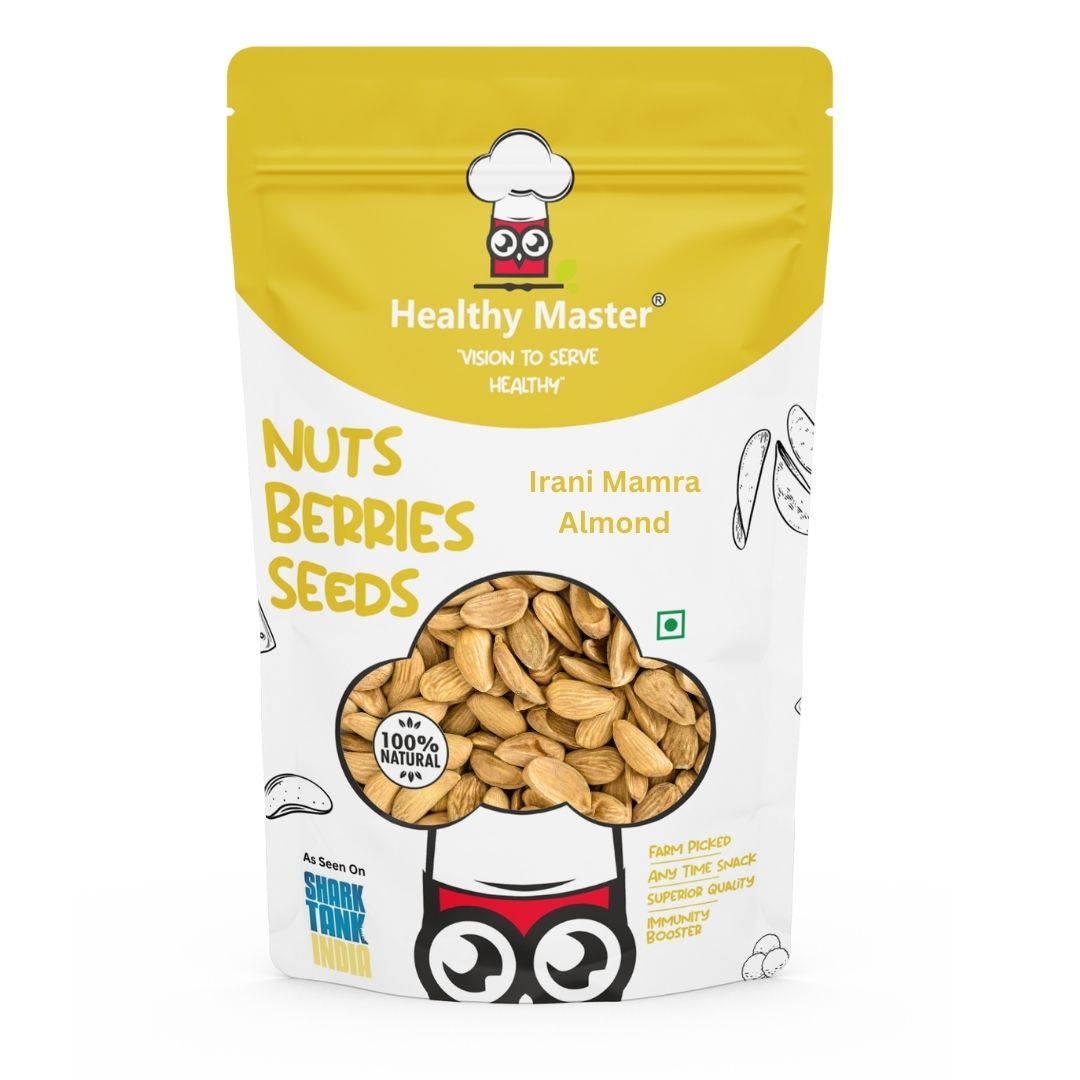
Iranian almonds are the most commonly consumed dry fruit, with several benefits for all age groups. They can be eaten raw, soaked, or roasted. They are known to treat heart diseases, blood sugar levels, and weight management. If you're counting dry fruits nutrition facts 100g, almonds contain around 579 calories with 21g of protein.
1 ounce (28g) serving of Almonds:
-
Protein 6 grams
-
Fiber 4 grams
-
Plus Vitamin E (35% of Daily Value)
-
Magnesium (20% of Daily Value)
-
Calcium (8% of Daily Value)
Also Read: Why are Almonds Good for Heart Health?
-
Pistachios (Pista)
This sweet and unique flavor of dry fruit is mostly preferred as a snack. Plain Pista is a well-known name in the variety of dry fruits. It is good for the heart, treats diabetes, improves hemoglobin, and blood circulation. It is a rich source of 30 different minerals, vitamins, and phytonutrients.
1 ounce (28g) serving of Pistachio:
-
Protein 5.72 grams
-
Carbs 7.7 grams
-
Fiber 3 grams
-
159 calories
-
Fat 12.85 grams
-
Cashew (Kaju) Dry Fruits
It is commonly referred to as a nut, but a seed that can improve your overall health. This kidney-shaped seed can help you with weight loss, heart health, and blood sugar levels. Cashew nuts are energy-dense, so tracking dry fruits calories can be helpful when adding them to your diet.
1 ounce (28g) serving of cashews:
-
157 calories
-
Protein 5 grams
-
Fat 12 grams
-
Copper (67% of Daily Value)
-
Fiber 1 gram
-
Carbs 9 grams
-
Iron (11% of Daily Value)
-
Apricot (Khumani) Dry Fruits
Apricots (Khumani) are small, orange color, tart-tasting fruits that are rich in various vitamins and minerals. This nutritionally dense fruit protects your heart and eyes.
35 grams serving of fresh Apricots:
-
Energy 16.8 calories
-
Proteins 0.49 grams
-
Fat 0.14 grams
-
Fiber 0.7 grams
-
Carbohydrates 3.89 grams
-
Beta-Carotene 383 mcg
-
Vitamin A 33.6 mcg
-
Dates (Khajoor) Dry Fruits
This super delicious and iron-rich dry fruit is perfect for the winter season. This nutritious fruit can be savored in many forms; you can add it to a dessert or eat it as it is. You can find good-quality dates easily at Healthy Master.
1 Date (7 grams) serving:
-
Fiber 0.6 grams
-
Protein 0.2 grams
-
20 calories
-
Sodium 0.14 mg
-
Carbohydrates 5.3 grams
-
Hazelnuts Dry Fruits
How can we forget hazelnuts, dry fruits, in our list? Hazelnut comes from the Corylus tree and is rich in nutrients like protein, fats, minerals, and vitamins. This sweet-flavored nut is usually eaten raw, roasted, or ground into a paste. It is even added to chocolate products like Nutella.
1 ounce (28g) serving of Hazelnut:
-
Fat 17 grams
-
Protein 4.2 grams
-
Fiber 2.7 grams
-
Carbs 4.7 grams
-
176 calories
-
Vitamin E (21% of Daily Value)
-
Copper (24% of Daily Value)
-
Magnesium (12% of Daily Value)
-
Manganese (87% of Daily Value)
-
Walnuts (Akhrot) Dry Fruits
This brain-shaped nut is a single-seeded stone fruit that contains healthful fats, protein, and fiber. Generally, walnuts dry fruit are eaten as is after removing the shell, but you can also add them to your salad, breakfast cereals, baked food, and pasta.
1 ounce (28g) serving of walnuts:
-
Protein 4.3 grams
-
185 calories
-
Carbs 3.9 grams
-
Fiber 1.9 grams
-
Fat 18.5 grams
-
Sugar 0.7 grams
-
Raisins (Kismis) Dry Fruits
Next on our dry fruits list is Raisins(Kismis). This naturally sweet dry fruit is a good source of sugars, fat, protein, dietary fiber, various vitamins, and minerals. Popularly, they are used as a salad topping, in yogurt, baked cookies, muffins, and other delectable food items.
1 ounce (28g) serving of Raisins:
-
42 calories
-
Protein 0.5 grams
-
Fiber 0.6 grams
-
Sodium 3.6 grams
-
Carbohydrates 11 grams
-
Sugar 9.1 grams
-
Prunes Dry Fruits
Prune is nothing but a dried plum, which is extremely nutritious and offers a plethora of health benefits. Although they are high in sugar content, prunes also contain many beneficial compounds that you can’t avoid. It will satisfy your sweet tooth while providing nutritional benefits. While high in sugar, prunes still offer rich dry fruits nutrition facts 100g, including fiber and potassium.
1 ounce (28g) serving of Prunes:
-
Sugars 11 grams
-
67 Calories
-
Fiber 2 grams
-
Carbs 18 grams
-
Vitamin K (21% of Daily Value) & Vitamin B2/B3/B6 (3% of Daily Value)
-
Vitamin A (4% of Daily Value)
-
Dry Figs
This unique fruit has an edible green or purple skin with hundreds of tiny seeds. The flesh of figs has a mild, sweet taste and is packed with nutrition. A lot of people use dried figs to treat health problems related to the reproductive and respiratory systems.
100 grams serving of Dried Figs:
-
249 calories
-
Protein 3.3 grams
-
Dietary Fiber 9.8 grams
-
Calcium 162 mg
-
Iron 2.03 mg
-
Magnesium 68 mg
-
Vitamin C 1.2 mg
-
Beta-Carotene 6 mcg
-
Makhana (Fox Nuts)
Fox nuts are another type of dry fruit which are mainly used as a nutritional snack that one can eat at any time of the day. They are not only added to several food items and Indian cuisine but have also been used in medicine for thousands of years. Roasted makhana contains multiple micronutrients to keep you healthy.
100 grams serving of Makhanas:
-
350 calories
-
Protein 9.7 grams
-
Carbohydrates 77 grams
-
Dietary Fiber 7.6 grams
-
Calcium 60 mg
-
Iron 1.4 mg
-
Potassium 500 mg
Also Read about: Makhanas: Benefits and Nutritional Value
-
Dry Berries
Dried berries are of different colors and may taste sweet or sour. They are usually rich in fiber, vitamin C, and antioxidant polyphenols; thus, they help in preventing symptoms of chronic diseases. A variety of dry berries are available at Healthy Master, from blueberries to goji berries. Many of these berries are known to improve your heart health and reduce the risk of type 2 diabetes.
You might like: Why Berries Should be Included in Your Diet?
-
Seeds
It’s not the fruit that contains high nutrition; even their seeds are a powerhouse of protein, vitamins, and minerals. Some most popular, high-protein seeds include flax seeds, sunflower seeds, chia seeds, pumpkin seeds, and sesame seeds. If incorporated into a daily diet, seeds can help reduce blood sugar, cholesterol, and blood pressure.
What's the Best Time to Eat Dry Fruits for Maximum Benefits?
The best time to consume dry fruits for maximum benefit is in the morning on an empty stomach. It is because, in the morning, your body is most receptive to absorbing nutrients after a night of fasting. Dry fruits like almonds, walnuts, and raisins are rich in fiber, healthy fats, antioxidants, and essential vitamins, which help kickstart your metabolism and provide sustained energy throughout the day.
Eating them first thing in the morning also supports better digestion, improves brain function, and boosts immunity. For example, soaked almonds can enhance nutrient absorption and are easier on the stomach. Walnuts provide omega-3s for brain health, while dates and raisins offer natural sugars that gently raise energy levels.
Overall, starting your day with dry fruits helps nourish your body from the inside out, supporting overall health and vitality.
Conclusion
Each dry fruit has a different texture and flavor. Rich in protein, minerals, and vitamins, various types of dry fruits are available at Healthy Master. We have a collection of raw, roasted, or any way you like your dry fruits to fulfill your nutritional requirement. Whether you're on a weight loss journey or just staying healthy, being mindful of calories in dry fruits can guide your daily portions.
Frequently Asked Questions About Dry Fruits
1. Which dry fruit is the most healthy?
Almonds are considered one of the healthiest due to their high fiber, vitamin E, and healthy fats.
2. What is dry fruit name 15?
Almonds, Walnuts, Cashews, Pistachios, Raisins, Dates, Apricots, Figs, Prunes, Hazelnuts, Pine nuts, Brazil nuts, Pecans, Fox nuts (Makhana), and Chestnuts.
3. Which are dried fruits?
Raisins, Dates, Figs, Apricots, Prunes, Cranberries, Blueberries, Cherries, and Apples (dehydrated).
4. Is dried fruit healthy?
Yes, in moderation. It's rich in fiber and nutrients but also high in natural sugar and calories.
5. Is it good to eat dry fruits daily?
Yes, daily consumption in moderate amounts supports overall health and energy.
6. How many walnuts to I eat per day?
2–4 whole walnuts (or halves) per day are sufficient.
7. Which dried fruit is lowest in sugar?
Dried apricots and prunes have relatively lower sugar compared to others like dates or raisins.
8. Can I eat dry fruits while trying to lose weight?
Yes, but in moderation. Choose low-calorie dry fruits like apricots, raisins, or makhana and track dry fruits calories to avoid overeating.
 Deal of the week : Trial Snack Box - 18 Wholesome Delights Just at ₹ 899.00
Deal of the week : Trial Snack Box - 18 Wholesome Delights Just at ₹ 899.00






